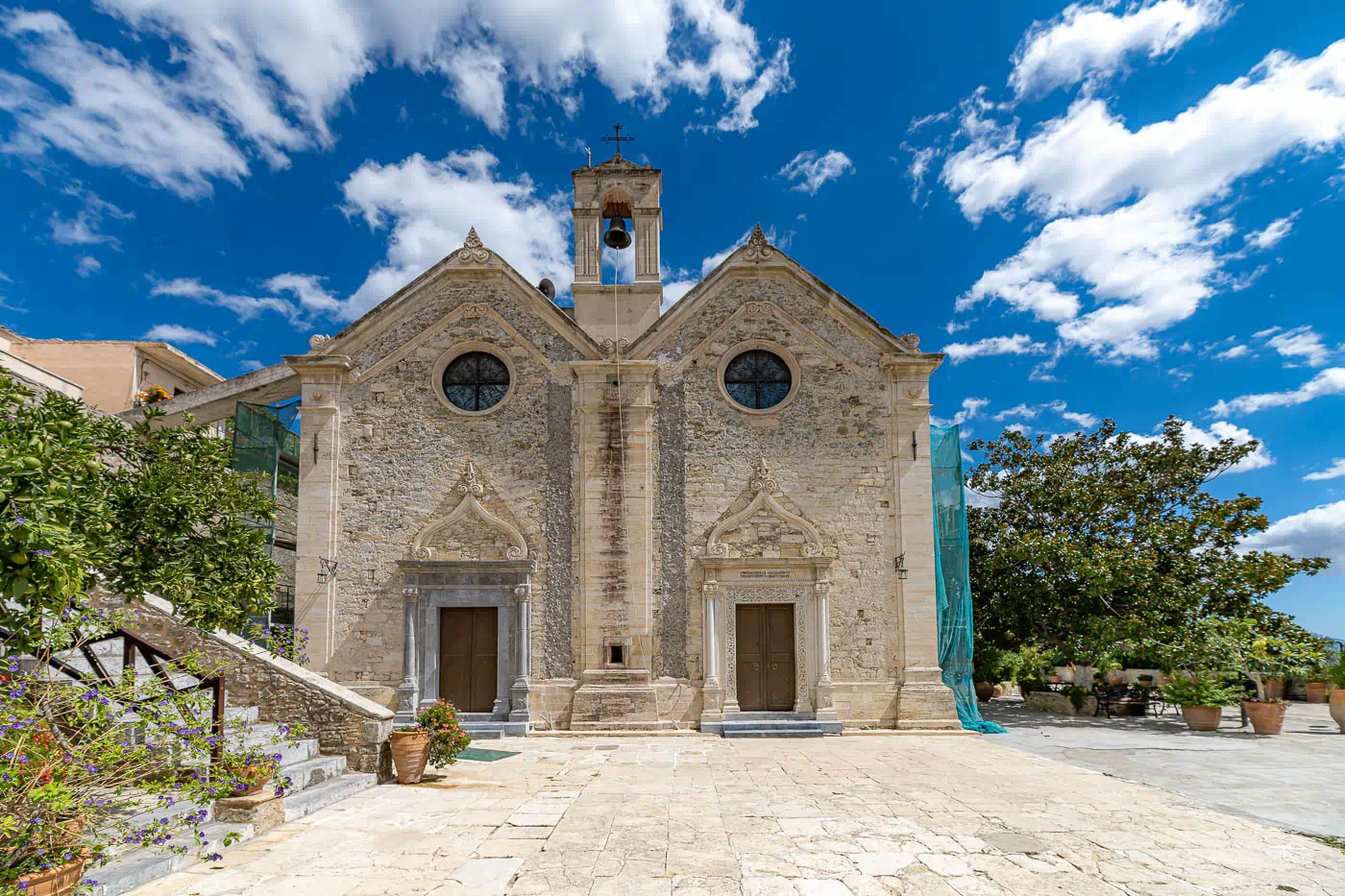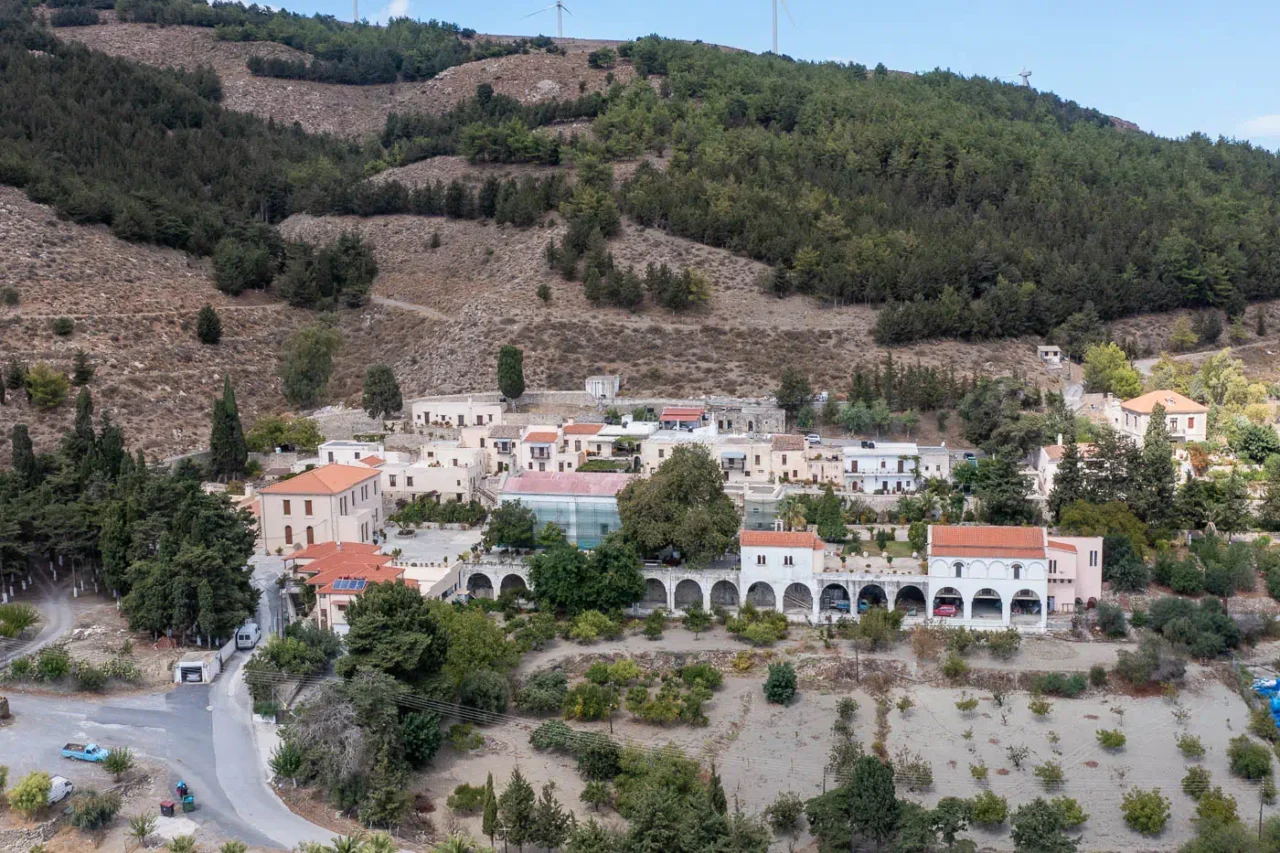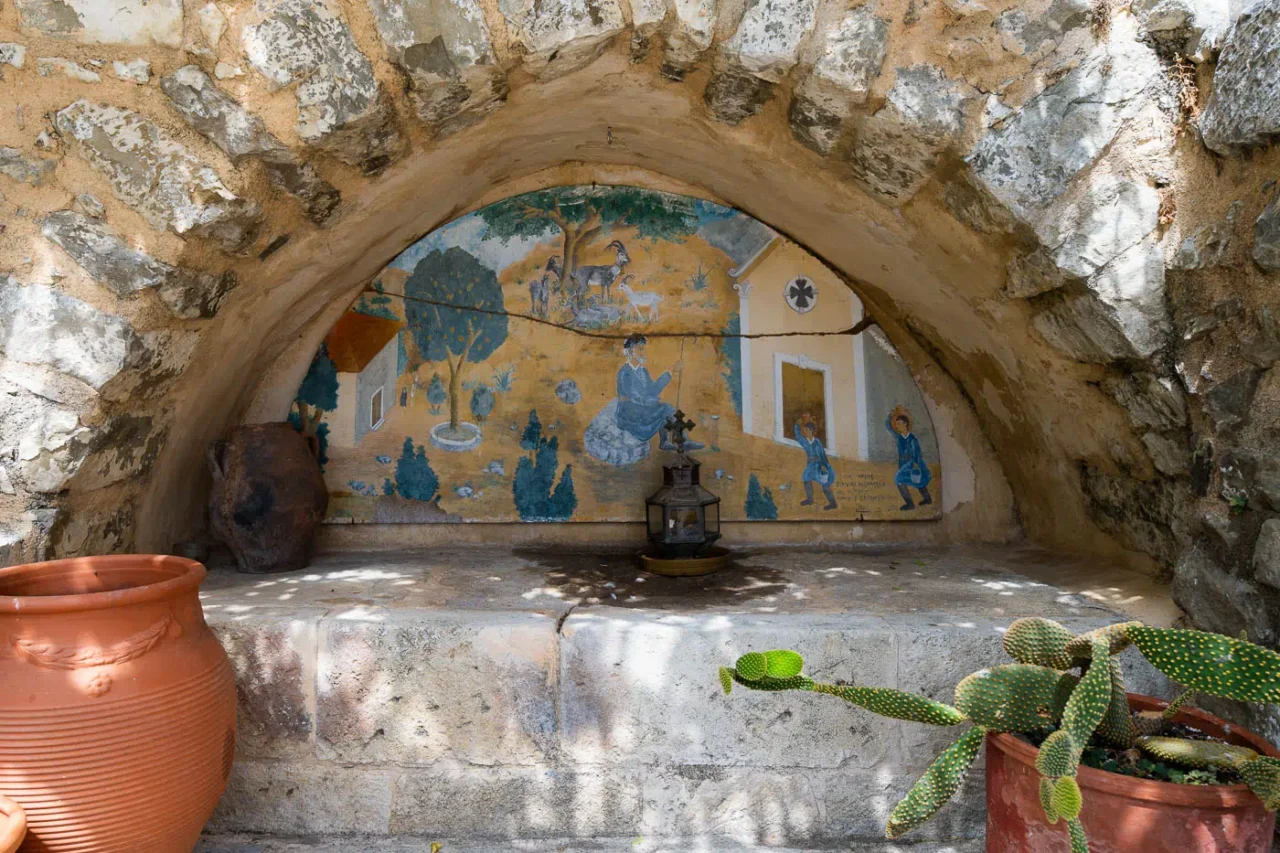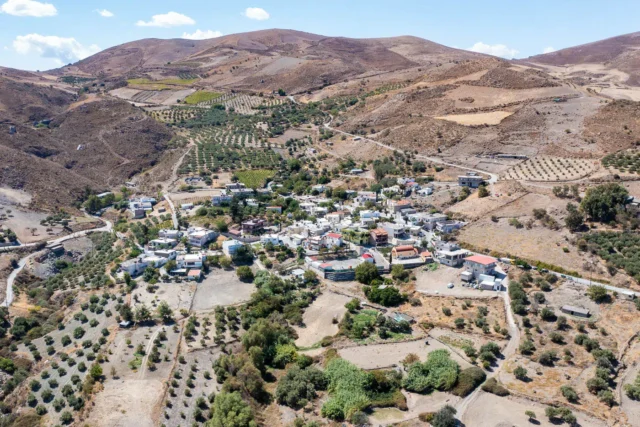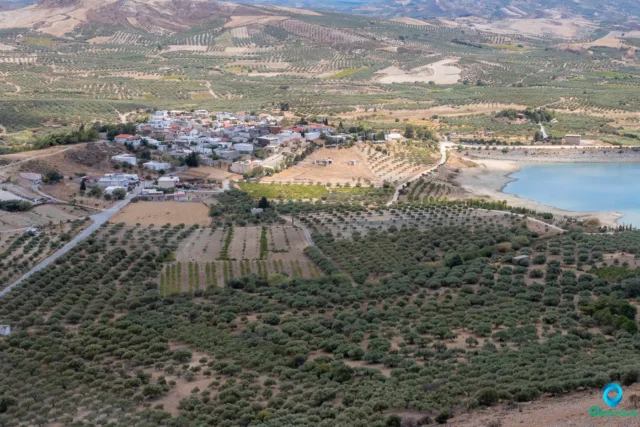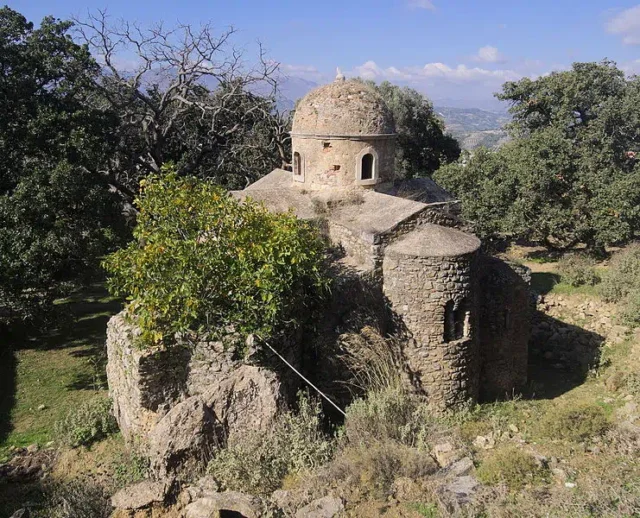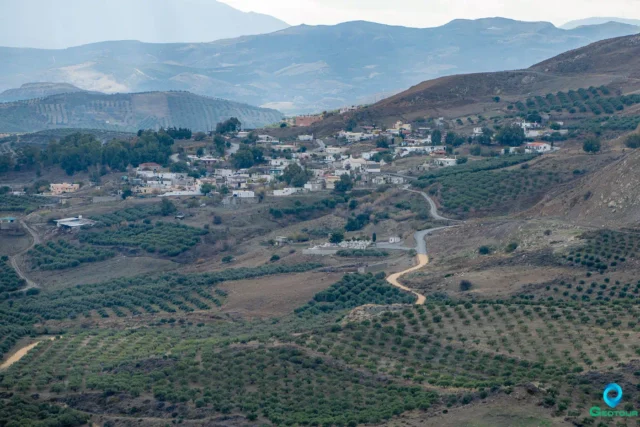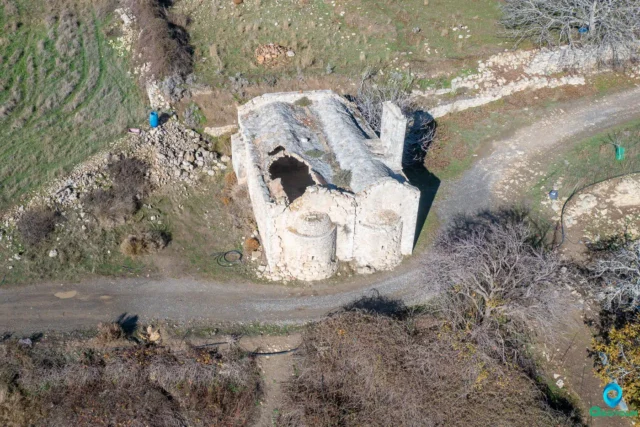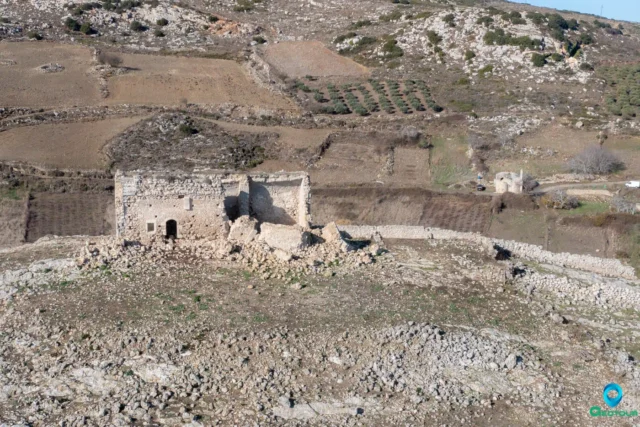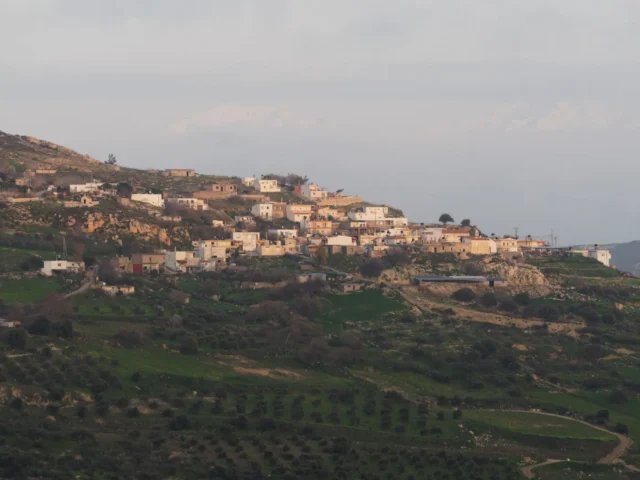The Monastery of Agios Georgios Epanosifis, also known as Apanosifis, holds a significant place in the religious and cultural landscape of Crete. Located in the Monofatsi province, approximately 30 kilometers south of Heraklion, it stands as one of the oldest and largest monasteries on the island. Dedicated to Saint George, the monastery has a rich history intertwined with the struggles and triumphs of the Cretan people.
Historical Significance
The monastery’s origins date back to the late Venetian period, although the exact year of its founding remains unknown. According to historical accounts, a monk named Paisios from the Apsezon Monastery initiated the establishment of Epanosifis. Following internal disputes at his original monastery, Paisios embarked on a journey to the Agkarathos Monastery. Along the way, he sought shelter in a small church dedicated to Saint George on the Langouvardos family’s estate. It is believed that Saint George appeared to Paisios in a dream, urging him to stay and expand the church. With the support of the local community and the Langouvardos family, Paisios fulfilled this divine request, laying the foundation for the future monastery.
The name “Epanosifis” is attributed to the landowner, Langouvardos, who had two shepherds named Sifis. To distinguish between them, he referred to them as “Epano-Sifis” (Upper Sifis) and “Kato-Sifis” (Lower Sifis). As the monastery was built on the land associated with Epano-Sifis, it adopted the name Agios Georgios Epanosifis.
Throughout the Ottoman occupation of Crete, the monastery played a crucial role as a spiritual and educational center. It provided refuge to travelers and those seeking solace during challenging times. The monastery also housed a school and a substantial library, attracting learned monks who engaged in various intellectual pursuits, including book copying, hymnography, and teaching.
During the Cretan uprising of 1821, the monastery faced a tragic event. Eighteen monks were killed by the Ottomans, and they are now honored as New Martyrs of the Church. Following this devastating incident, the monastery experienced a period of desolation.
In 1856, a powerful earthquake struck the region, causing the collapse of the original church dedicated to Saint George. The monastery remained without a main church until 1863 when, with permission from the Ottoman authorities, a new church was constructed.
Architectural Features
The monastery complex showcases a blend of architectural styles reflecting its long history and various renovations. The main church, dedicated to Saint George and the Transfiguration of the Savior, is a prominent feature. Completed in 1863, it replaced the earlier church destroyed in the earthquake. The church boasts impressive doorways adorned with relief motifs.
Other notable structures within the complex include the abbot’s residence, the refectory, a museum and library building, workshops, and the monks’ cells. The monks’ cells, arranged in clusters, primarily consist of two-story buildings, some of which date back to the original 17th-century core of the monastery.
Cultural and Spiritual Significance
The Monastery of Agios Georgios Epanosifis continues to be a vital center of religious and cultural activity in Crete. It serves as a place of worship, pilgrimage, and spiritual retreat. The monastery also houses a collection of sacred relics, icons, vestments, and manuscripts, preserving the island’s rich religious heritage.
The monastery celebrates two major feasts each year. On April 23rd, it commemorates the martyrdom of Saint George, and on November 3rd, it celebrates the translation of his holy relics. These feasts attract numerous pilgrims and visitors who come to pay their respects and participate in the festivities.
Key Points
- Construction Period: Late Venetian period (exact year unknown), with significant renovations and additions in the 19th and 20th centuries
- Location: Monofatsi province, approximately 30 kilometers south of Heraklion
- Historical Significance: Founded by monk Paisios, served as a spiritual and educational center during Ottoman occupation, witnessed the martyrdom of 18 monks in 1821
- Current Status: Active monastery, houses a collection of sacred relics and manuscripts, celebrates major feasts on April 23rd and November 3rd








